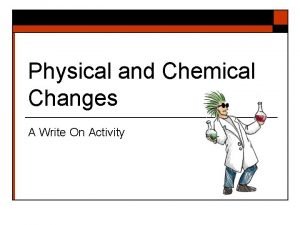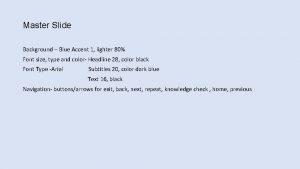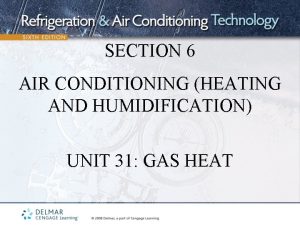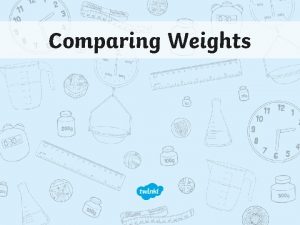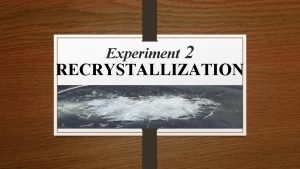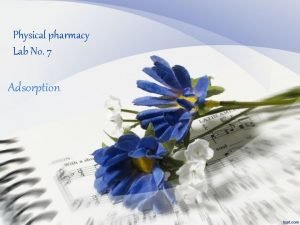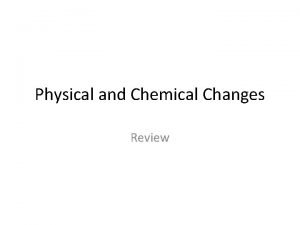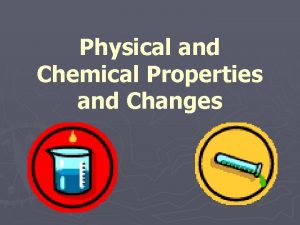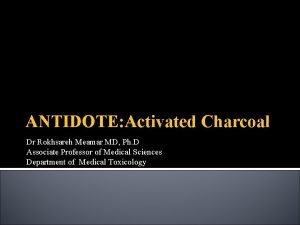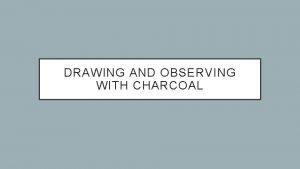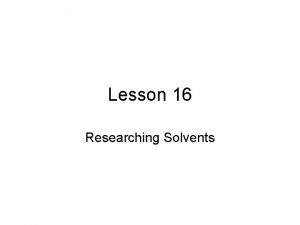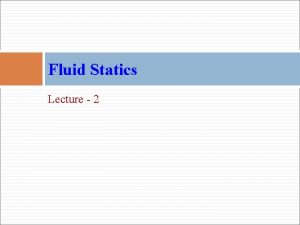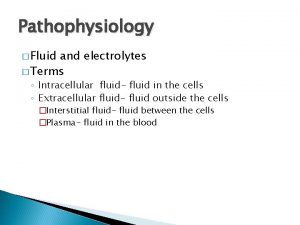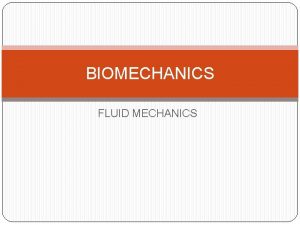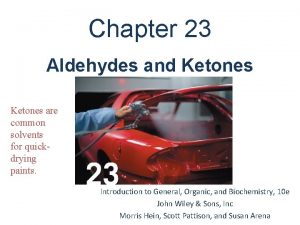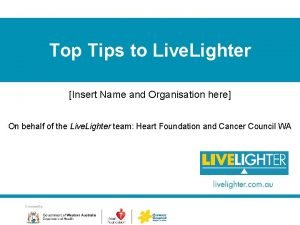Solvents Some common solvents v Charcoal lighter fluid






















- Slides: 22

Solvents

Some common solvents v Charcoal lighter fluid, v Windshield washer fluid, v Paint, v Household cleaners, and even v Water! 1 a

Use of solvents v Cleaning v Degreasing v Removing paint, ink, or other coatings 1 b

Use of solvents v Producing adhesives, paints, inks, coatings, varnishes, and other sealers v Solvents with we work 1 c

How to recognize solvents v Usually liquid v Many are colorless v Most have a strong odor v Some evaporate quickly 2 a

How to recognize solvents v Always label check the container’s 2 b

Chemistry of solvents v Solvents are used to dissolve something else v Like dissolves like v How electron are distributed is called polarity 3 a

Chemistry of solvents v Polar solvents: • • • v Water Ketones Alcohols Non-polar solvents: • • • Oils Petroleum distillates Many chlorinated solvents 3 b

Chemistry of solvents v Always use the solvent specified for the job v Why we use certain solvents 3 c

Health hazards v Routes of entry include: • Breathing the vapors, • Direct contact, and • Ingestion if you are eating or drinking while using the solvents. 4 a

Health hazards: Acute effects v Dizziness v Nausea v Irritation v Dryness v Itching v Dermatitis 4 b

Health hazards: Chronic effects v Chronic target: diseases typically • Skin, • Liver, • Kidneys, • Circulatory system, • Reproductive system, and • Nervous system. 4 c

Health hazards v Check the MSDS v Health hazards of the solvents we use 4 d

Physical hazards v Combustible v Flammable v Check the MSDS v Physical hazards of the solvents we use 5

Engineering controls that reduce exposures v Ventilation v Automated equipment chemical transfer v Engineering controls we use 6

Personal protective equipment (PPE) v See solvent’s MSDS for PPE recommendations v Employer PPE v Types selects appropriate of PPE we use 7

Safe work procedures v See solvent’s MSDS for safe handling information v Take appropriate fire prevention precautions v Use only the amount needed 8 a

Safe work procedures v Dispense spills v Be carefully to avoid cautious about skin contact v Follow all job-specific work procedures 8 b

Safe storage procedures v See solvent’s MSDS for safe storage information v Solvents may need to be stored separately from other materials v Storage areas should be well ventilated 9 a

Safe storage procedures v Rough handling can lead to dangerous leaks v Inspect containers for damage prior to use v Report suspected damage, contamination, or leaks 9 b

Proper clean-up and disposal v Emergency releases should be handled by a specially trained Hazmat team v Waste solvents need to be collected in proper containers 10

First aid and emergency procedures v Refer to the MSDS for first aid and emergency information v Always follow our company’s specific procedures for emergency response and first aid 11
 Kingsford lighter fluid msds
Kingsford lighter fluid msds Physcial change
Physcial change Blue accent 1 lighter 80
Blue accent 1 lighter 80 Return air and supply air
Return air and supply air Comparing weights
Comparing weights Charcoal in a fire turns to ash after several hours.
Charcoal in a fire turns to ash after several hours. Decolorizing charcoal recrystallization
Decolorizing charcoal recrystallization Charcoal coolers in kenya
Charcoal coolers in kenya The dates of the classical period are
The dates of the classical period are Adsorption of oxalic acid on charcoal lab experiment
Adsorption of oxalic acid on charcoal lab experiment Light comparative
Light comparative Charcoal heating a grill physical or chemical change
Charcoal heating a grill physical or chemical change Charcoal value scale
Charcoal value scale Peripheral device
Peripheral device Know the lingo poetry answer key
Know the lingo poetry answer key What is lighter than a brick
What is lighter than a brick Chiaroscuro charcoal
Chiaroscuro charcoal Activated charcoal phails
Activated charcoal phails Frank auerbach charcoal
Frank auerbach charcoal To be in love is to touch with a lighter hand
To be in love is to touch with a lighter hand The color of a sunset physical or chemical
The color of a sunset physical or chemical Charcoal
Charcoal Fluid statics deals with fluid at rest
Fluid statics deals with fluid at rest

